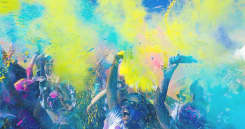When young people start using club drugs to boost their fun, the next “rave” may change their lives forever. Club drugs are a broadly-defined collection of well-known party favorites, like Ecstasy, to some concoction some high school chemistry genius cooked up at home. That’s one big part of the club drug problem. You don’t know what you’re actually taking.
You don’t know the dosage amount, side effects, impact on judgment, signs of allergic reactions. Used in nightclubs, at parties, raves, rock concerts, bars, and other hangouts, club drugs have become a problem of epidemic proportions.
Club drugs often require recovery therapy to avoid relapse
They’re easy to get, they’re cheap, and you can experience the “experience” from a pharmaceutically enhanced point of view. You can also alter your brain’s chemistry. There are plenty of studies on the effects of Ecstasy, known as MDMA, on the human brain, and none of them are good.
Ecstasy delivers anything but ecstasy. According to the National Institute on Drug Abuse (NIH), “Studies have shown that some heavy MDMA users experience long-lasting confusion, depression, and selective impairment of working memory and attention processes.” In other words, regular use of ecstasy isn’t going to make you smarter.
What are some popular club drugs?
Club drugs are most popular with younger abusers at club events, concerts, and other high-energy social interactions. The use of these drugs is said to enhance the “club” experience, though an individual’s reaction to any popular club drug will vary depending on age, gender, dosage, use in combination with other drugs including alcohol, and a number of other factors including frequency of use.
GHB, or Gamma-Hydroxybutyrate, is also known as the “date-rate” drug. It’s often slipped into a victim’s drink and can lead to loss of consciousness in 69% of reported cases, hallucinations, amnesia, and even coma. Victims become incapacitated because of the sedative effects of GHB.
LSD – d-lysergic acid diethylamide – is often simply called “acid.” It’s a hallucinogen that’s been popular with substance abusers going back to the ‘60s psychedelic years. A single “tab” of acid can affect perception for up to 12 hours or longer. Regular acid users may experience psychotic episodes with highly-altered perceptions of reality. Hallucinations can be visual, aural, tactile, or any combination of senses. Some LSD users report “bad trips” in which perceptual changes can cause psychosis and personal injury due to loss of perception.
Ketamine, or Special K, was developed as an anesthetic but has become part of the club scene because of its hallucinogenic properties.
Methamphetamine, also called meth, chalk, ice, crystal and other street names is a highly-addictive stimulant. It can be smoked, ingested, snorted, injected, mixed with alcohol, and because meth is so addictive, abusers quickly become snared in the meth binge and crash cycle. Meth addicts require ongoing support to avoid relapse. They also must learn coping mechanisms to prevent a return to a very dangerous, highly-addictive drug. Long-term use of meth causes chemical and even molecular changes in the brain leading to anxiety, confusion, the inability to sleep, violent outbursts, and psychosis including visual and aural hallucinations. Meth actually causes structural changes in the brain in areas tied to memory, emotions, learning rate, and a variety of cognitive issues.
Physically, long-time meth addicts often experience extreme weight loss, severe dental problems called meth mouth and open sores caused by repeated scratching. Because it delivers a potent high when injected, needles are often shared by meth addicts, causing the spread of HIV/AIDS.
Heavily abused by the club crowd, methamphetamine is addictive and destructive. In fact, meth is so addictive it requires a schedule of therapies combining traditional behavior modification and education with soothing therapies that bring meth addicts closer to reality and away from environments where meth is accepted.

Ecstasy is an exciting, energizing drug that’s popular with people in the nightlife, club, and rave scenes. Learn about; What is ecstasy, the effects of ecstasy, myths, medical uses, side effects, treatment, and more.
More infoWhere can I get help?
Club drugs – designer drugs – present a long list of dangers from extreme addiction to loss of consciousness and physical control. The dangers of these substances are not only well-documented, but addicts will also tell you the horrors associated with the abuse of these concoctions.
Hawaii Island Recovery
In many cases, addicts require ongoing treatment designed to address the problems associated with club drug abuse and addiction. At Hawaii Island Recovery, located in the Kailua-Kona district on the island of Hawaii, our professional staff and small residential population increase the chances of kicking a dangerous, even lethal, habit and taking control of life again with customized therapeutic routines and after-care to prevent relapse – often common among addicts who try to clean up on their own. You can reach Hawaii Island Recovery 24/7 to turn around your life and leave the “rave” clean and sober.
Get Help Today!
If you or a loved one need help, call Hawaii Island Recovery toll-free right now.
866-390-5070 Hawaii Island Recovery
Hawaii Island Recovery 










